Building VR Worlds with ViRSE
ViRSE worlds are constructed within the Unity engine using the ViRSE template.
Simple worlds can be constructed using a drag-and-drop visual design approach. ViRSE interaction features include InfoPoints, activatable buttons, more sophisticated interactable controls such as sliders and rotatable wheels, and objects that can be picked up and manipulated. The ViRSE platform handles network synchronization for all these, allowing multiple users to experience the same world together.
ViRSE worlds can consist of simple 3D environments, developed without a single line of code. This is ideal for simulating facilities or environments that are dangerous or impractical to take students to in the real world.
Click here to open ViRSE's developer documentation
More complex worlds that represent simulations of systems may require coding. ViRSE and Unity use the C# language, and ViRSE imposes few restrictions on what can be done. If you can envisage it in a video game, it can almost certainly be done inside ViRSE.
During development, the ViRSE template provides a simulated platform environment for testing and debugging. Once created, ViRSE worlds are exported into the live ViRSE platform for use.
Operational ViRSE Worlds
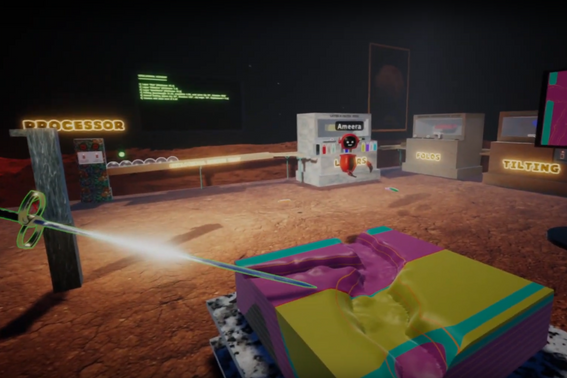
MapLab
MapLab is a geological history simulator, intended as a free-form laboratory to aid with the understanding of three-dimensional structures on two-dimensional maps... Students construct geological histories (layers, faults, folds, erosion etc) which generate a 3D block model of the geology for inspection, and a 2D map for comparison. The image shows a tutor group being led through a MapLab demonstration; like all ViRSE worlds, MapLab is 'multiplayer' by default.
MapLab was created by Khunakorn Limpsapapkasiphol and Mark Sutton (Earth Science & Engineering) through a Student Shapers project, Summer 2022.
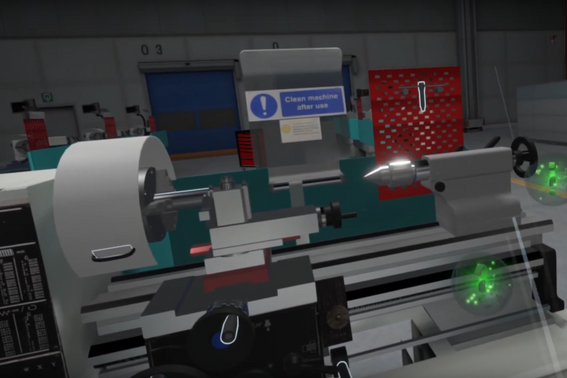
SimuLathe
SimuLathe reproduces a real mechanical lathe used in Mechanical Engineering. Its goal is to provide a safe environment in which students can learn how the lathe controls work, and the safety procedures required to use the machine. The lathe is fully functional, and can be used to machine virtual metal cylinders into desired shapes.
SimuLathe was constructed by Ori Blich and Marc Masen (Mechanical Engineering) through a Student Shapers project, Summer 2022.
Examples 2
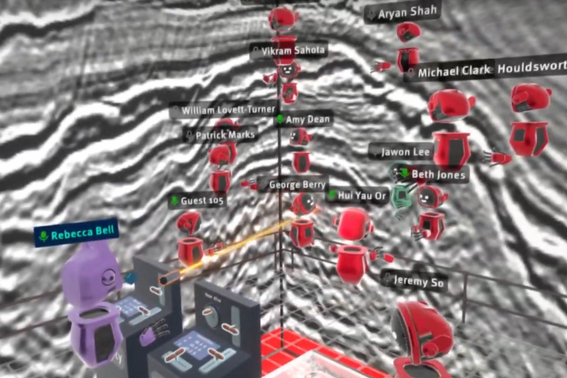
Seismics
The seismics application provides an immersive, interactable visualisation of three-dimensional seismic reflection data. The class leader can pick an existing dataset, or upload a new one, to load into the program, whereupon it will be displayed to all students at once. The class leader can navigate through the subterranean landscape to highlight specific geological features
Seismics was created by Haotong Zou and Rebecca Bell (Earth Science & Engineering) through a Student Shapers project, Summer 2023.
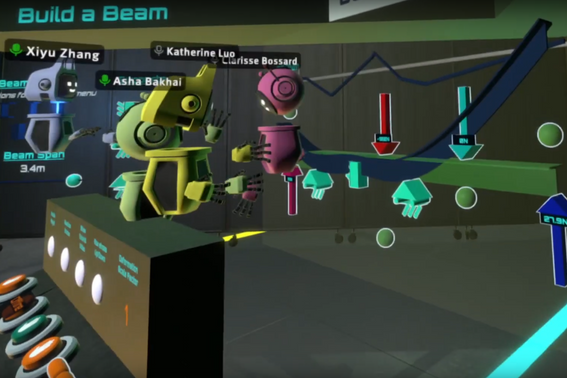
Structural Analysis
The structural analysis simulator is a freeform space to experiment with beam and truss structures. Students can experiment with different configurations of beams, supports, and loads, to manipulate the structures with their hands and observe the visualised deformations in real time, nurturing a truly kinesthetic understanding of the content.
Structural Analysis was created by Asha Bhakai, Martin Leung, Stephen Liu, and Demetrios Venetsanos (Aeronautics) through a Student Shapers project, Summer 2023.
Examples 3 - Crowd Dynamics and Fossil Viewer
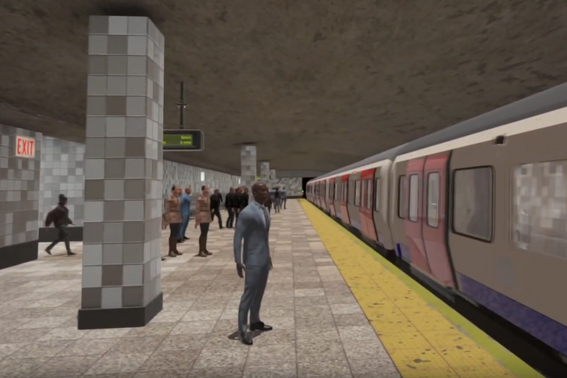
Crowd Dynamics
The crowd dynamics application immerses students in a virtual replica of a London Underground station, complete with crowds of AI, pathfinding agents going about their daily commute. Students can experiment with varying evacuation procedures, varying the population of the station, and placing obstacles within the path of the agents to observe the change in their behavior, and the wider effects on the dynamic of the overall crowd.
Crowd dynamics was created by Zekai Ni, Lola Spehner, Ran Zhang, and Arnab Majumdar (Civil and Environmental Engineering) through a Student Shapers project, Summer 2023.
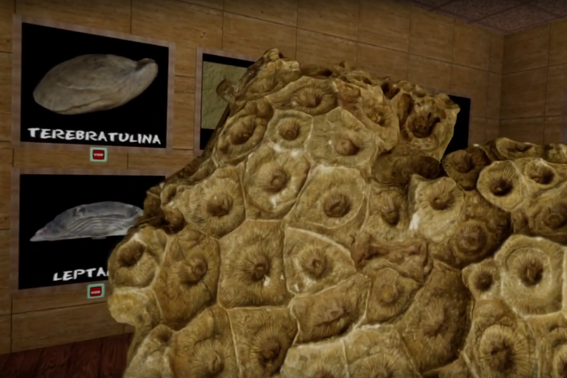
Fossil Viewer
The fossil viewer provides a facility for observing high-quality (typically photogrammetry) models of fossils, and other objects. Staff can upload any fossil or object they wish for students to observe. All students in a class can view their own version of the fossil at once, and fossils can be enlarged and measured to better observe each and every detail.
Fossil viewer was created by Mark Sutton (Earth Science and Engineering).
Examples 4 - Game of Life
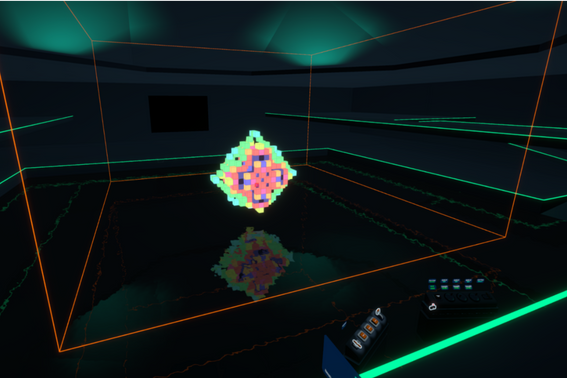
Game of Life 3D
The Game of Life 3D is an immersive, 3D variation to John Conway’s "Game of Life" - a cellular automaton that provides a fascinating model for exploring complex, emergent behavior through the propagation of simple interactions. Users can configure the size of their three-dimensional grid before specifying a starting seed, whereupon the “game” can be started, and the evolving behaviors, patterns, and complexity can be observed.
Game of Life 3D was created by Fred Tovey-Ansell (Earth Science and Engineering).
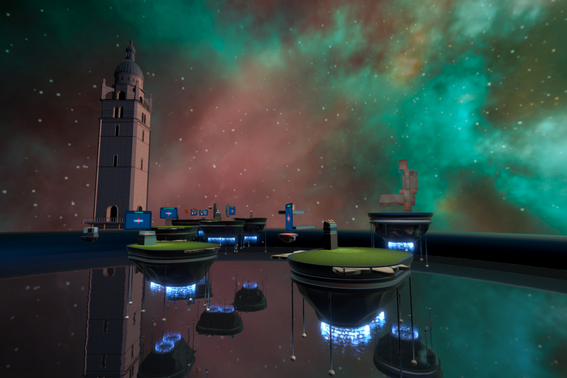
Watch this space!
We have a number of further ViRSE worlds in development and scheduled for use in undergraduate teaching in 2024 - watch this space!
If you're interested in learning more or creating your own ViRSE world, please get in touch.
Contact us
Development Lead
Fred Tovey-Ansell
f.tovey-ansell@imperial.ac.uk
Academic Lead
Mark Sutton
m.sutton@imperial.ac.uk
